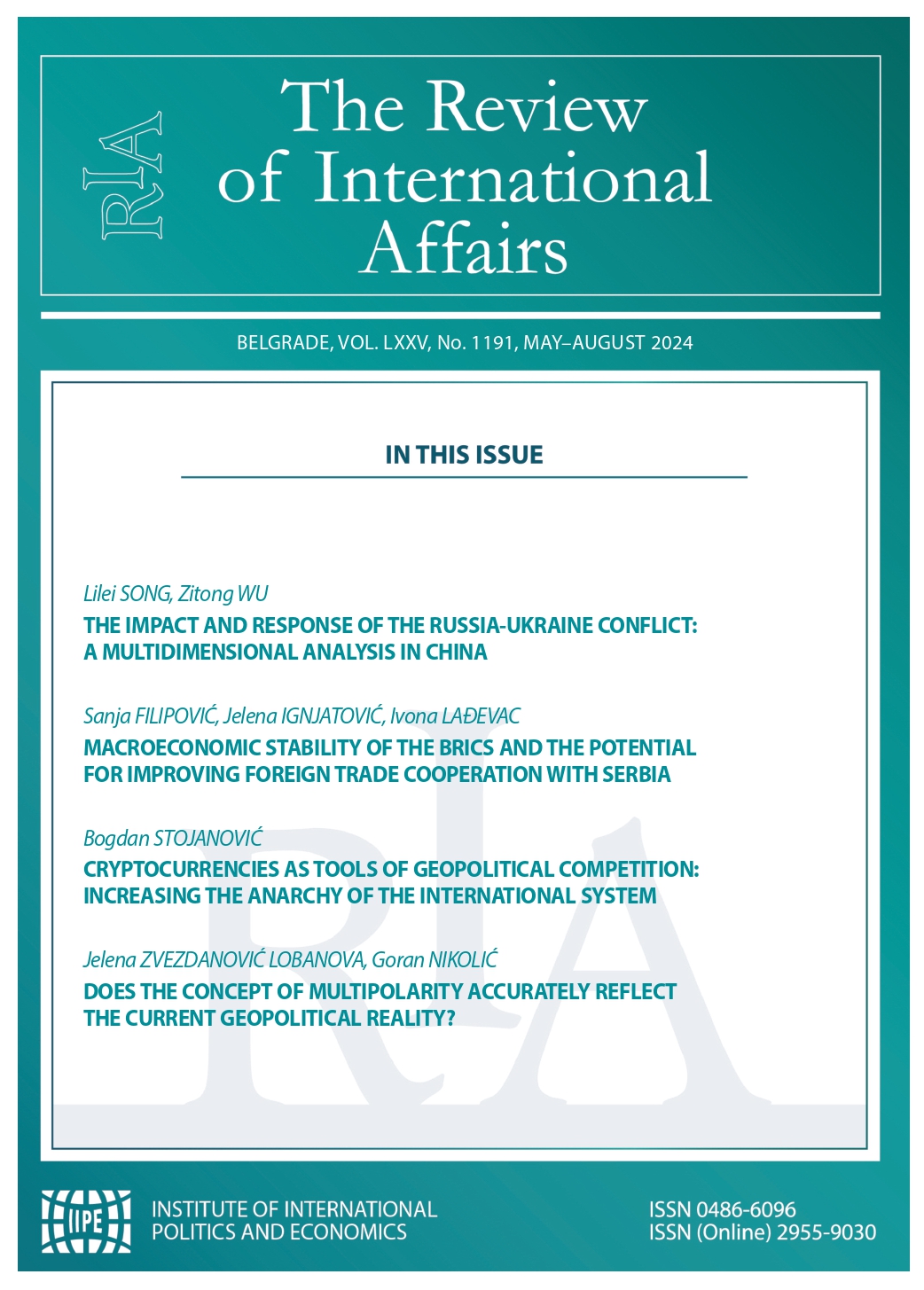Macroeconomic Stability of the BRICS and the Potential for Improving Foreign Trade Cooperation with Serbia
Macroeconomic Stability of the BRICS and the Potential for Improving Foreign Trade Cooperation with Serbia
Author(s): Sanja M. Filipović, Jelena Ignjatović, Ivona LađevacSubject(s): International relations/trade
Published by: Институт за међународну политику и привреду
Keywords: BRICS; Serbia; G7; EU; macroeconomic stability; foreign trade exchange
Summary/Abstract: The aim of this research is to evaluate the macroeconomic stability of the BRICS and to determine the potential of Serbia’s foreign trade cooperation with its members. The macroeconomic analysis is based on comparative statistical data for 2000-2022, showing that the BRICS countries, compared to the G7, have higher economic growth rates. However, the standard of living is almost six times lower. On average, inflation and unemployment in the BRICS are higher than in the G7. The BRICS have a twice lower average public debt to GDP, while the external debt ratio to GDP is six times lower than in the G7. Except for China, the BRICS countries’ exports are dominated by resources and products of low-tech processing and export of medium- and high-tech products and capital-intensive products is low. With the exception of China and Russia (with whom Serbia has concluded a Free Trade Agreement), foreign trade with the other BRICS member countries is insignificant, and Serbia has a trade deficit with them. Determining the possibilities for improving trade exchange requires a more detailed analysis of the complementarity of economies and the liberalization of trade regimes. However, geographical distance is the main obstacle.
Journal: The Review of International Affairs
- Issue Year: LXXV/2024
- Issue No: 1191
- Page Range: 217-240
- Page Count: 24
- Language: English

